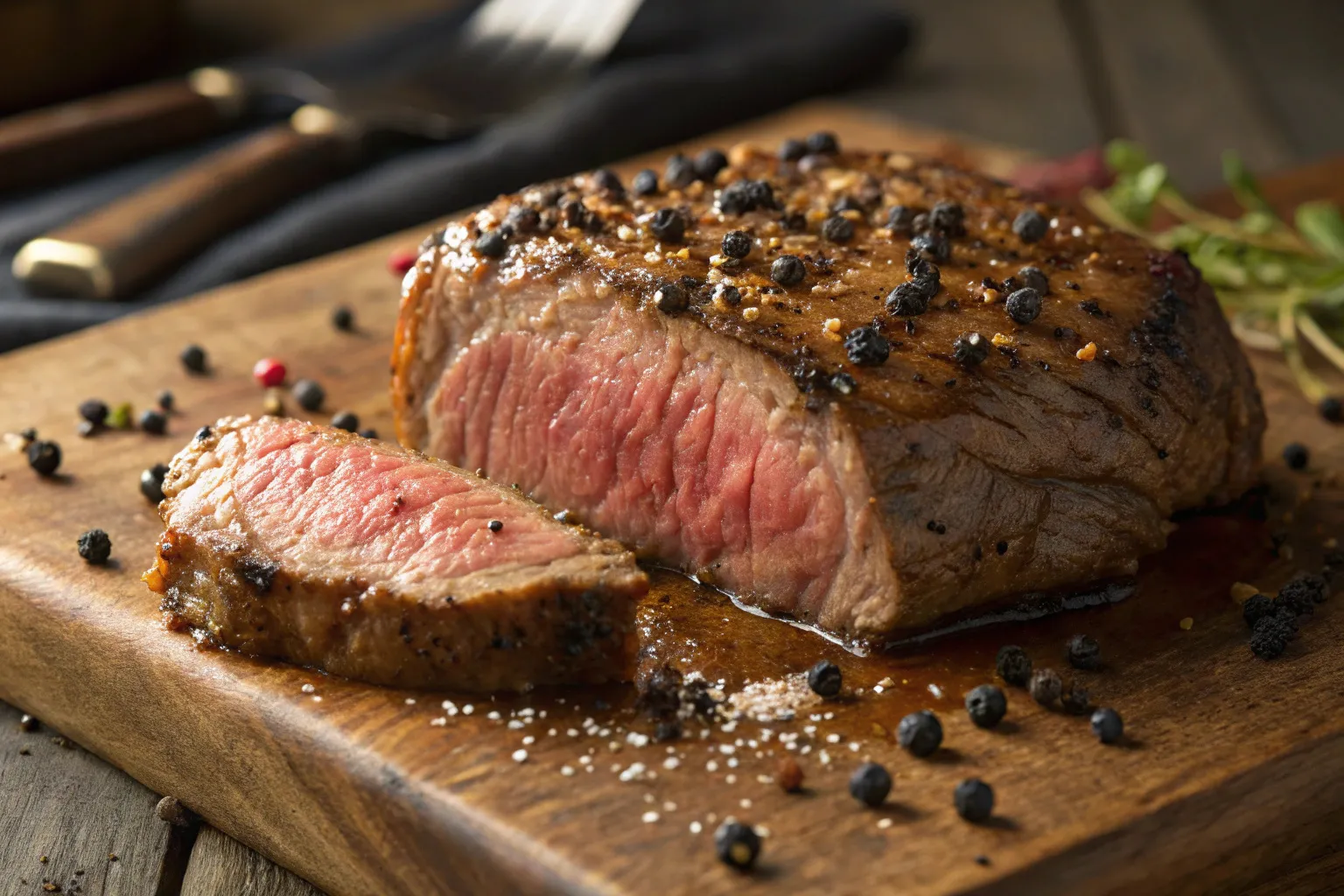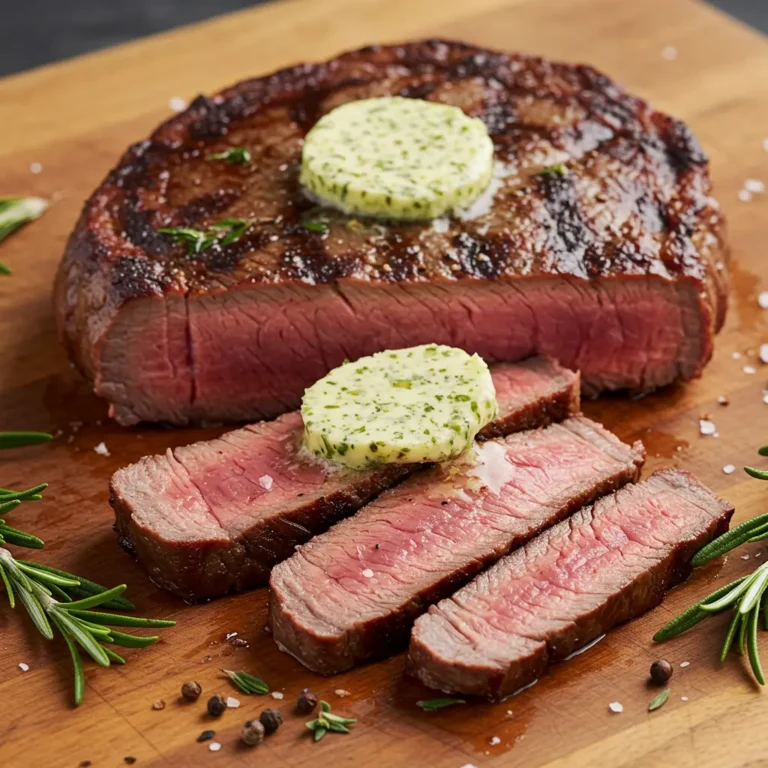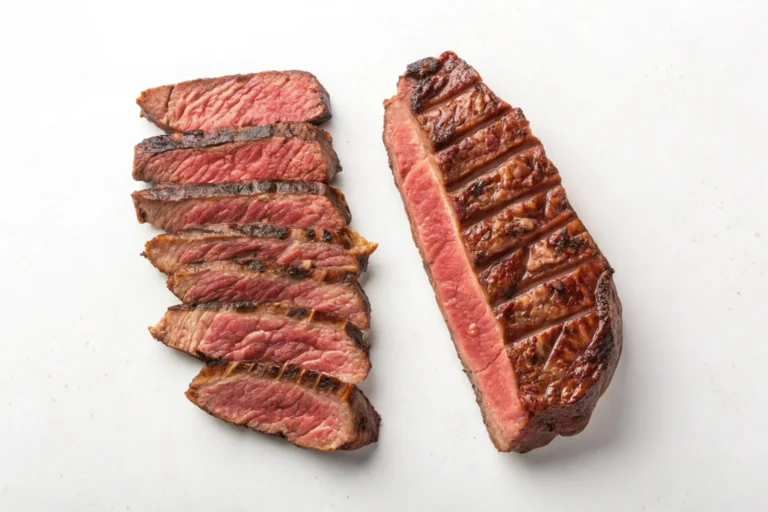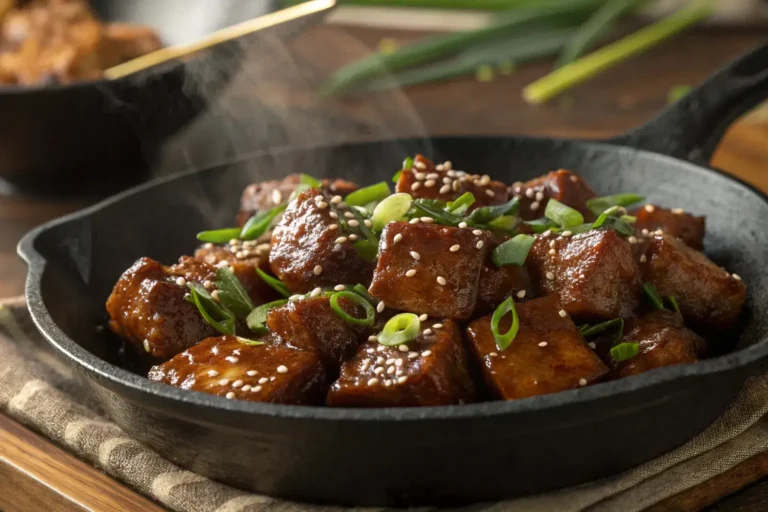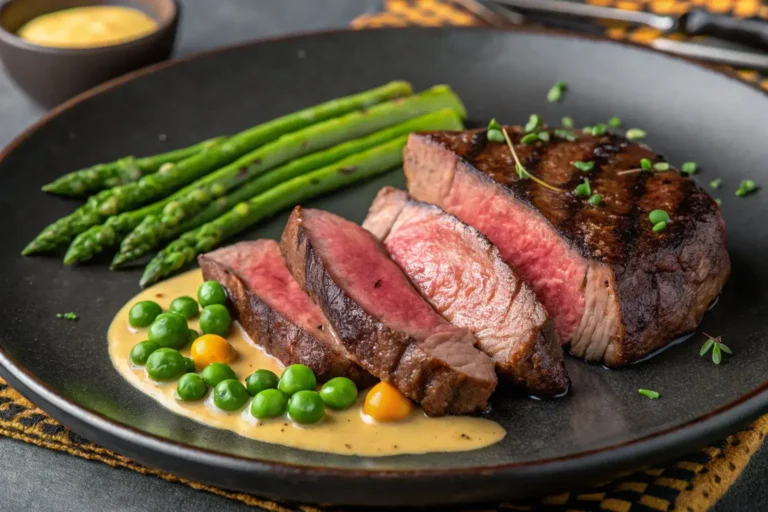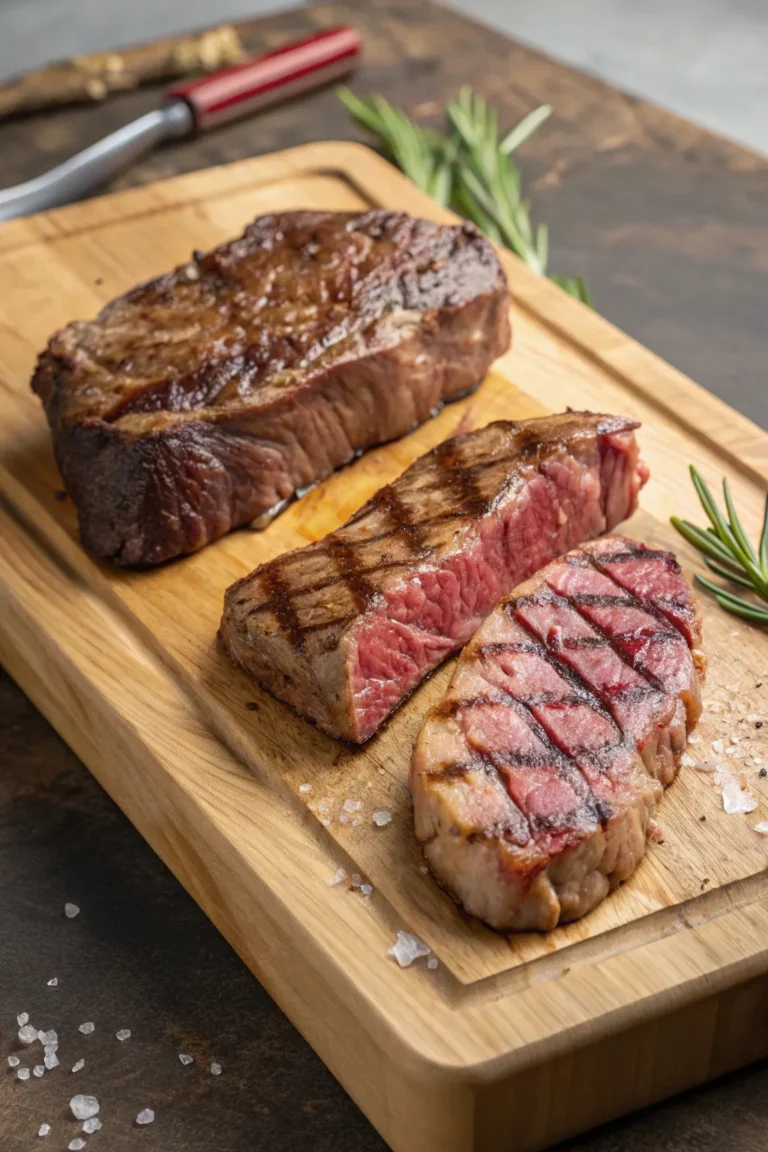Savor the Flavor: Black Pepper Angus Steak
Every great meal starts with a moment of anticipation. That sizzle, that aroma, the promise of a perfectly cooked black pepper angus steak. It turns an ordinary dinner into an extraordinary experience. You’re about to discover the secrets of creating a restaurant-quality angus beef steak right in your own kitchen.
Whether you’re a seasoned home chef or just beginning to explore the world of premium beef, you’ll find insider tips and professional techniques. These will elevate your cooking skills. Get ready to impress your family and friends with a steak that looks and tastes like it came straight from a high-end steakhouse.
Table of Contents
Understanding Premium Angus Beef Selection
Choosing the right angus beef steak is an art. It turns a simple meal into a special experience. Your journey starts with learning about beef quality and selection.
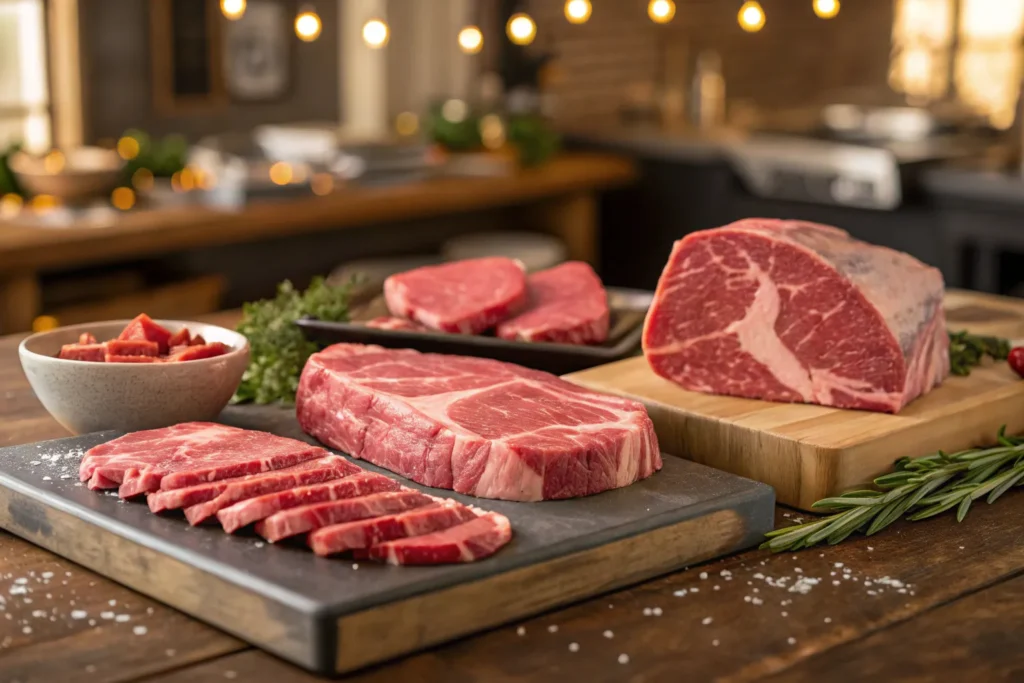
Exploring premium beef, you’ll find several key factors. These factors make a steak stand out:
- Marbling: The white fat streaks in beef ribeye and prime rib cuts
- USDA grade classifications that show meat quality
- Different textures and flavors in various cuts
Marbling and Grade Classifications
The secret to a tender, flavorful filet mignon is marbling. More intramuscular fat means richer, buttery flavors. USDA grades range from Select to Prime, with Prime being the highest quality.
Choosing the Perfect Cut for Pepper Crust
Not all cuts are the same for a black pepper steak. Thick cuts like ribeye and prime rib are best. They have enough surface for a strong pepper crust and stay juicy inside.
Fresh vs. Aged Beef Considerations
Choosing between fresh or aged meat is another big decision. Aged beef has deeper flavors from controlled moisture and enzymatic breakdown. Dry-aged cuts are pricier but offer complex tastes.
Essential Tools and Ingredients for Black Pepper Angus Steak
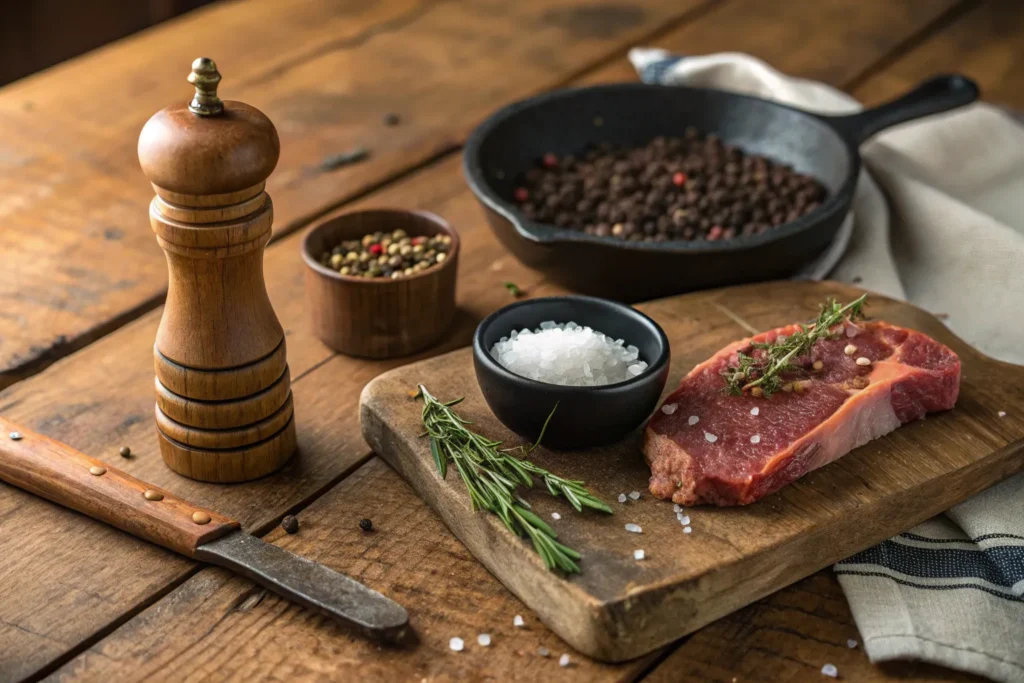
To make a perfect black pepper Angus steak, you need more than just great meat. Success in cooking comes from choosing the right tools and ingredients. Knowing the essential equipment and flavor enhancers is key.
For a top-notch steak experience, you’ll need a few important tools:
- High-quality cast-iron skillet
- Precision meat thermometer
- Professional-grade pepper mill
- Sharp kitchen tongs
- Meat tenderizer (for tougher cuts)
Choosing the right steak seasoning is vital for a great Angus steak. Freshly ground black pepper is the main ingredient, adding strong flavor and aroma. Coarse-ground black pepper tastes more intense than finely ground.
When picking a meat tenderizer, think about manual or mechanical options. Some chefs like traditional meat mallets, while others prefer enzymatic tenderizers. Your choice depends on the cut and texture you want.
Salt is also key in your seasoning strategy. Use kosher or sea salt for the best crust and flavor. Season well but not too much.
- Pro tip: Always bring your Angus steak to room temperature before seasoning
- Expert technique: Pat the meat dry before applying steak seasoning
With these tools and techniques, you’re set to turn an ordinary Angus steak into a restaurant-quality dish.
Mastering the Black Pepper Crust Technique
Creating the perfect pepper crusted steak needs skill and precision. The right seasoning can turn an ordinary steak into a restaurant-quality dish. It will make your taste buds happy.
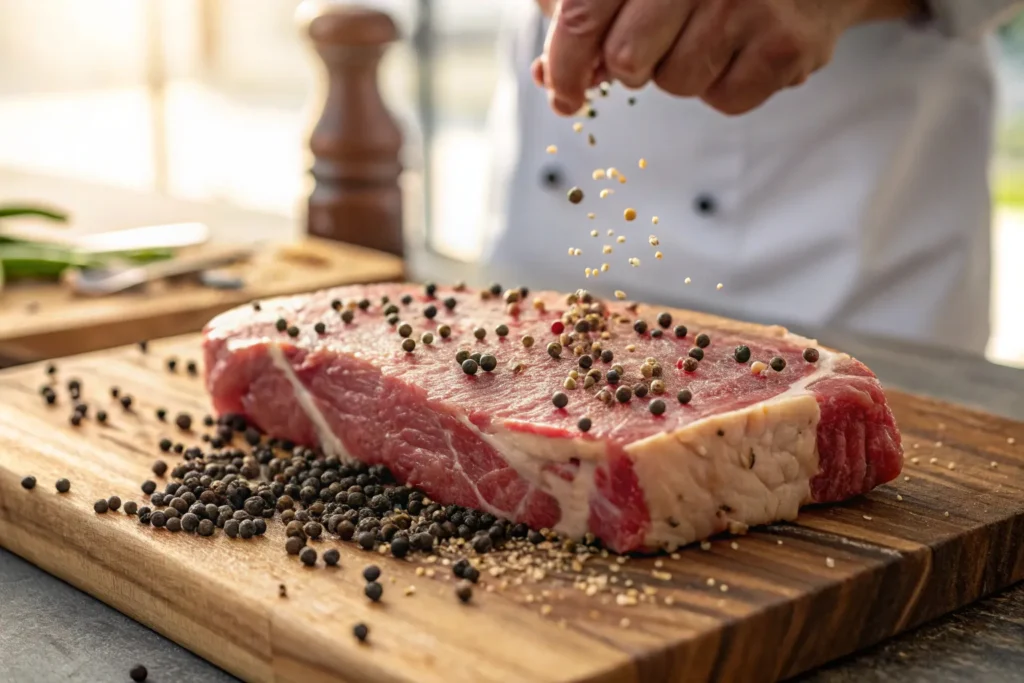
Your technique for the pepper coating is key to a delicious steak. Let’s explore the secrets of getting that amazing black pepper crust. It will take your cooking to the next level.
Choosing the Right Pepper Grind
Choosing the right pepper is important for your steak seasoning. You have two main options:
- Coarse Ground Pepper: Offers a robust texture and strong flavor
- Fine Ground Pepper: Gives a smoother, more even coating
Seasoning Techniques for Maximum Flavor
Professional chefs know that making a great pepper crusted steak is more than just sprinkling pepper. Here are the key steps:
- Pat the steak dry with paper towels
- Apply a light coat of oil to help pepper stick
- Press pepper firmly into the meat’s surface
- Let the seasoned steak rest for 15-20 minutes before cooking
Creating the Perfect Pepper Coating
The secret to a great pepper crust is even distribution and proper technique. Press the pepper gently but firmly into the meat. Make sure it covers the whole surface without making it too wet.
Perfect Temperature and Timing Guidelines
Cooking the perfect black pepper angus steak needs precision and knowing how to control temperature. Your grilled beef will taste amazing when you get the doneness and timing right.
Temperature is key when cooking your black pepper angus steak. Each level of doneness has its own internal temperature:
- Rare: 125°F (internal temperature)
- Medium Rare: 135°F
- Medium: 145°F
- Medium Well: 150°F
- Well Done: 160°F
Before grilling beef, let your steak sit at room temperature for 30-45 minutes. This helps with even heat and a consistent taste. Always use a meat thermometer to check the internal temperature.
Cooking times depend on the steak’s thickness. A 1-inch thick black pepper angus steak usually needs:
- 3-4 minutes per side for medium-rare
- 4-5 minutes per side for medium
- 5-6 minutes per side for medium-well
Remember, the steak will continue to cook a bit after it’s off the heat. Take it off when it’s 5 degrees below your final temperature to avoid overcooking.
For more inspiration learn How to Cook Steak, Peas & Asparagus Like a Pro Chef
Creating Restaurant-Quality Black Pepper Angus Steak at Home
Turning your kitchen into a steakhouse is simpler than you think. With the right techniques, you can make a delicious grilled beef dish that’s as good as a pro’s.
Learning how to make a great steak marinade and cooking it right will boost your cooking skills. It will also wow your dinner guests.
Searing and Cooking Methods
Getting the perfect black pepper crust needs careful attention. Here are some methods to get amazing results:
- Pan-searing: Uses high heat to create a crispy exterior
- Reverse sear: Slow-cook first, then finish with intense heat
- Grill method: Provides smoky flavor and beautiful char marks
Resting and Serving Tips
The secret to a juicy steak is resting it right. Let your grilled beef rest for 5-10 minutes after cooking. This makes sure the juices are evenly spread, making it tender.
Conclusion
Your journey to mastering the black pepper angus steak is about finding culinary magic in your kitchen. Each technique you learn turns a simple meal into a special dining experience. Learning to choose the best Angus beef, making the perfect pepper crust, and mastering cooking methods will boost your skills.
Practice is key to making an amazing black pepper angus steak. With each try, you’ll get better and understand flavors and textures better. Cooking is both a science and an art. Enjoy learning and trying new things.
Sharing your dish with family and friends is very rewarding. The peppery crust and tender Angus beef will wow your guests. Your skills turn a simple steak into a dish that’s both flavorful and impressive.
Keep exploring and improving your black pepper angus steak. Trust your instincts and stay curious. Cooking is a journey of discovery, and every meal is a chance to create something special. Enjoy the journey, relish the results, and keep exploring the world of great food.
FAQ
What makes Angus beef different from other types of beef?
Angus beef is special because of its marbling. This means it has more fat inside the meat. This fat makes the steak tender and full of flavor. The Angus breed is known for its high-quality meat, better than regular beef.
How do I choose the best cut of Angus steak for a black pepper crust?
Choose cuts like ribeye or filet mignon for the best flavor. Look for Prime or Choice grade Angus beef. Make sure the steak is 1.5-2 inches thick and well-trimmed.
What type of black pepper works best for a pepper crust?
Use freshly ground whole black peppercorns for the best taste. Coarse-ground black pepper is also great. It makes a strong and attractive crust on your steak.
How long should I let my steak rest after cooking?
Let your steak rest for 5-10 minutes after cooking. This lets the juices spread evenly, making the steak tender and flavorful. Keep it warm by covering it loosely with foil.
What’s the best way to achieve a perfect pepper crust?
Press the black pepper firmly onto the steak’s surface before cooking. Use enough pressure for the pepper to stick well. Pat the steak dry with paper towels first to help the pepper stick better.
Can I use a meat tenderizer with Angus steak?
Angus beef is already tender, but you can use a tenderizer on tougher cuts. For premium steaks, it’s not needed. If you do use a tenderizer, be gentle to avoid damaging the meat.
What internal temperature should I aim for when cooking my steak?
Cooking temperatures depend on your preference. Rare is 125°F, Medium Rare is 135°F, and so on. Most chefs say medium-rare at 135°F is the best for a tender and flavorful steak.
Did this recipe work for you? We’d love to hear how it turned out!
There are no reviews yet. Be the first one to write one.

